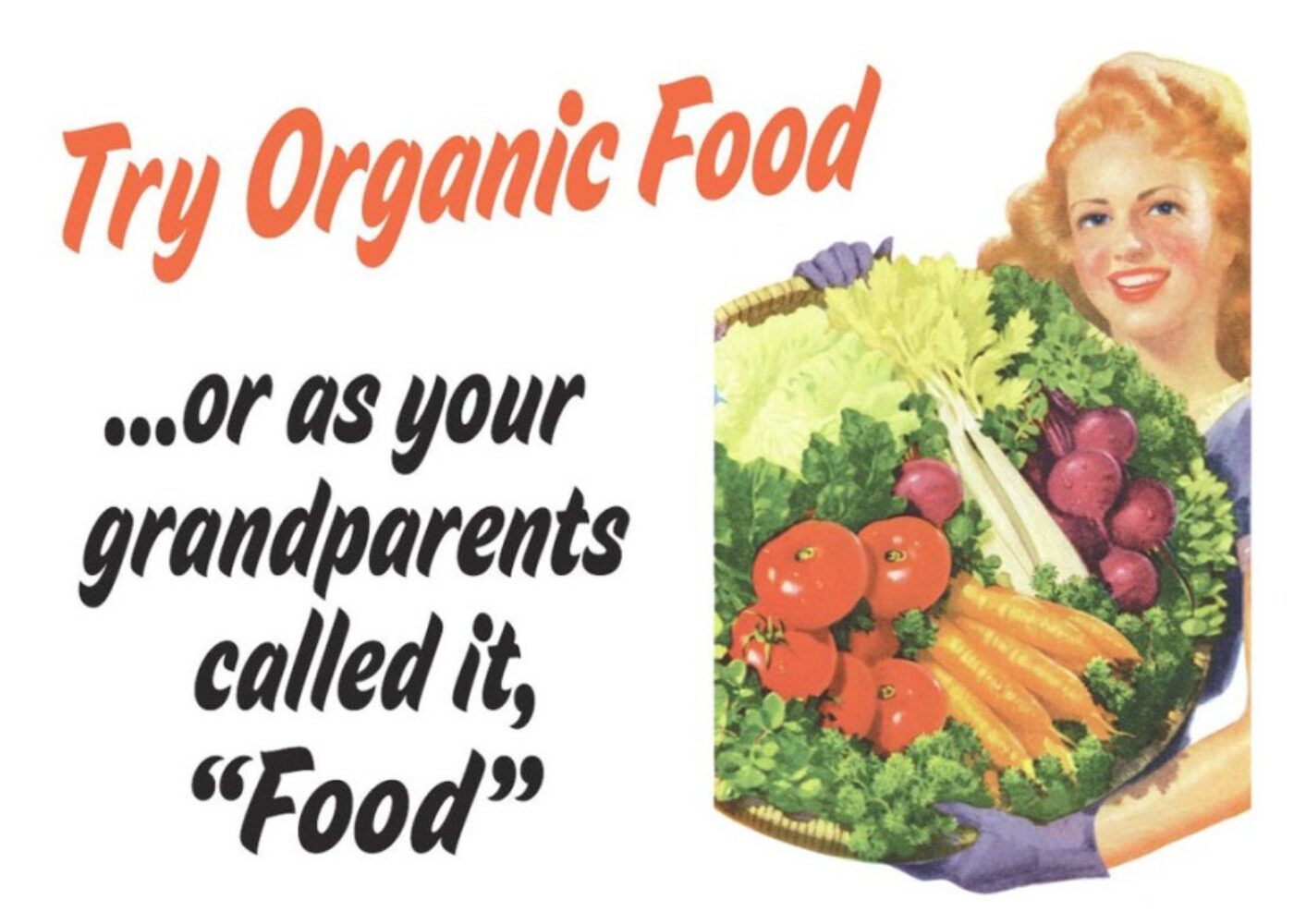What Does “Organic” Really Mean? Ask Your Grandmother

When I first heard the term “organic” several years ago, I dismissed it. It connoted a “status” and conjured up two different images: lifestyles of the rich and famous or perhaps some alternative, hippie thing.
I was wrong.
The term “organic” actually refers to the way agricultural products are grown and processed and legally details the permitted use (or not) of certain ingredients in these foods.
The details are that the U.S. Congress adopted the Organic Foods Production Act (OFPA) in 1990 as part of the 1990 Farm Bill which was then followed with the National Organic Program final rule published by the U.S. Department of Agriculture (USDA).
The standards include a national list of approved synthetic and prohibited non-synthetic substances for organic production which means that organically produced foods also must be produced without the use of:
- antibiotics
- artificial growth hormones
- high fructose corn syrup
- artificial dyes (made from coal tar and petrochemicals)
- artificial sweeteners derived from chemicals
- synthetically created chemical pesticide and fertilizers
- genetically engineered proteins and ingredients
- sewage sludge
- irradiation
Wow, who knew that conventional, non-organic food could contain these ingredients? Not many of us, since sewage sludge and artificial growth hormones aren’t on the label.
What about cloning animals or those genetically engineered salmon, hard-wired to double their weight? Those would be considered inconsistent with organic practices, too, because of the laboratory intervention required.
In other words, what we call “organic food,” our grandmothers would have simply called “food.” Because a lot of these new ingredients didn’t exist when we were younger, having only been created in laboratories, patented and then introduced into our foods in the last few decades.
Look for the Seal
Products labeled “100% Organic” and carrying the “USDA Organic” seal adhere to a strict legal standard: national organic standards require that organic growers and handlers be certified by third-party state or private agencies or other organizations that are accredited by USDA. Anyone who knowingly sells or mislabels as organic a product that was not produced and handled in accordance with the regulations can be subject to a civil penalty of up to $10,000 per violation.
Why Organics Cost More
Admittedly, the high price of organic food can irritate anyone. But the scrutiny that these foods undergo is enormous and expensive, driving prices at the cash register and for those producing them on the farm. Why the costs? Because the cost structure on our food supply offers taxpayer-funded resources called subsidies to the farmers using genetically engineered seeds and saturating crops in insecticides and weed killers, while charging the organic farmers fees to prove that their crops are safe.That’s like getting fined to wear your seat belt.In other words, it’s an un-level playing field right now. And if we were all sitting down as a national family at our national dinner table, I don’t think that any of us would want to be using our resources this way. Wouldn’t we rather have the organic food be the one that we fund, making it cheaper, more affordable and more accessible to all Americans?But right now, it’s not. So should you choose to opt out of our conventional, chemically-intensive food production system and try something organic, you’ll be joining a growing segment of the population and are not alone.
Where to Start?
Because the U.S. lags behind other developed countries when it comes to food safety, understanding label claims can often be a challenge for even the savviest shopper!The term “organic” refers to foods grown and processed without chemical toxins, artificial ingredients, chemical preservatives or ionizing radiation. The guidelines for organic foods were established on October 21, 2002 by the U.S. Department of Agriculture. To use these terms, producers must pay additional fees and follow strict guidelines and regulations:• 100 percent Organic — All ingredients are organic.• Organic — 95 percent or more of the total ingredients are organic.• Made with Organic Ingredients — At least 70 percent of the ingredients are organic.
For the savviest of label readers, the following are the legal guidelines established by the U.S. Department of Agriculture for organics:
Organic Fruits and Vegetables: Must be grown without the use of:• Synthetically created chemical pesticides• Synthetically created chemical fertilizers• Sewage sludge• Genetic engineering which appears to introduce novel proteins, allergens, viruses and toxins into crops.• Irradiation.
Organic Beef and Chicken: Fed only 100 percent organic feed, are not the offspring of cloned animals and have never been administered growth hormones or antibiotics. In addition, their meat must never be irradiated.• Natural (or All Natural) meat or poultry products contain no artificial ingredients and are minimally processed. They are not necessarily organic.• “No hormones administered” or “no antibiotics added” is sometimes seen on labels, but it can only appear if the producer can document the absence of hormone or antibiotic administration.• Free-range or free-roaming poultry have access to the outdoors without a minimum time. They are not necessarily organic.• Cage-free poultry means nothing as most chickens are kept indoors (but cage-free) if they are grown for meat.
Organic Milk: Comes from animals that were fed 100 percent organic feed and were not given antibiotics, prophylactic drugs or genetically engineered and synthetically created growth hormones (such as rBGH) for at least the last year.rBGH (recombinant bovine growth hormone) is a genetically engineered, synthetic chemical protein hormone vaccinated into cows to artificially boost their milk production. Like aspartame, rBGH has been banned in Europe because of the breast cancer risk that it may present.
Organic Eggs: Produced by hens that are fed 100 percent organic feed and have never been given growth hormones or antibiotics.• Cage-free eggs are produced by hens that are not confined in cages. The hens might not have access to the outdoors, though, and are not necessarily organic.
Organic Seafood: The USDA currently has no guidelines set for seafood; however, un-organic fish is often caged underwater and treated with pesticides to prevent the spread of disease.
Organic Bread: Cereal and grain crops are regularly sprayed with pesticides that collect in the grain’s outer layers, raising concerns about chemical residues in un-organic bread, cakes and cookies.
Other Terms: The following terms are often found on packaged products and can be confusing to consumers:* Natural is often a misnomer. There are no true guidelines for this term when used on a packaged product, although it is used frequently and often assumed to mean organic or healthier.* Gourmet is another misleading term that leads consumers to believe that they are purchasing a product that is made finer ingredients, when in reality it has no established guidelines or regulations.
And when it comes to protecting the health of your family, “Always remember, you have within you the strength, the patience, and the passion to reach for the stars to change the world.” ~ Harriet Tubman
Source: The Organic Trade Association (OTA) and Organic Trade Association Manufacturer Survey





